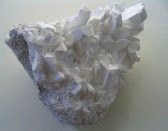Oxalic ACID
Oxalic Acid FPRIVATE "TYPE=PICT;ALT=repair-remodel-improve-decorate-fix" Just hearing the word "acid" sounds ominous. But oxalic acid is easy to use and the safest for the home. In fact it is found in many vegetables including spinach, and rhubarb. Perhaps its best known use is that as a wood bleaching agent.Exterior wood tends to turn a dark gray after being exposed and Oxalic acid solutions are used to lighten and brighten dingy gray wood. In the refinishing of wood furniture, oxalic acid can be used after stripping to lighten and soft darker stained areas befor refinishing. a few other uses for oxalic acid are: Precipitating agent in Rare-earth mineral processing; Bleaching agent in the textile activities, wood pulp bleaching; Rust remover for Metal treatment; Used in commercial rust removers to remove rust stains from tubs and sinks. Grinding agent, such as marble polishing Waste water tratment, removing calcium in water. Use in cleaning and sterilizing homebre
